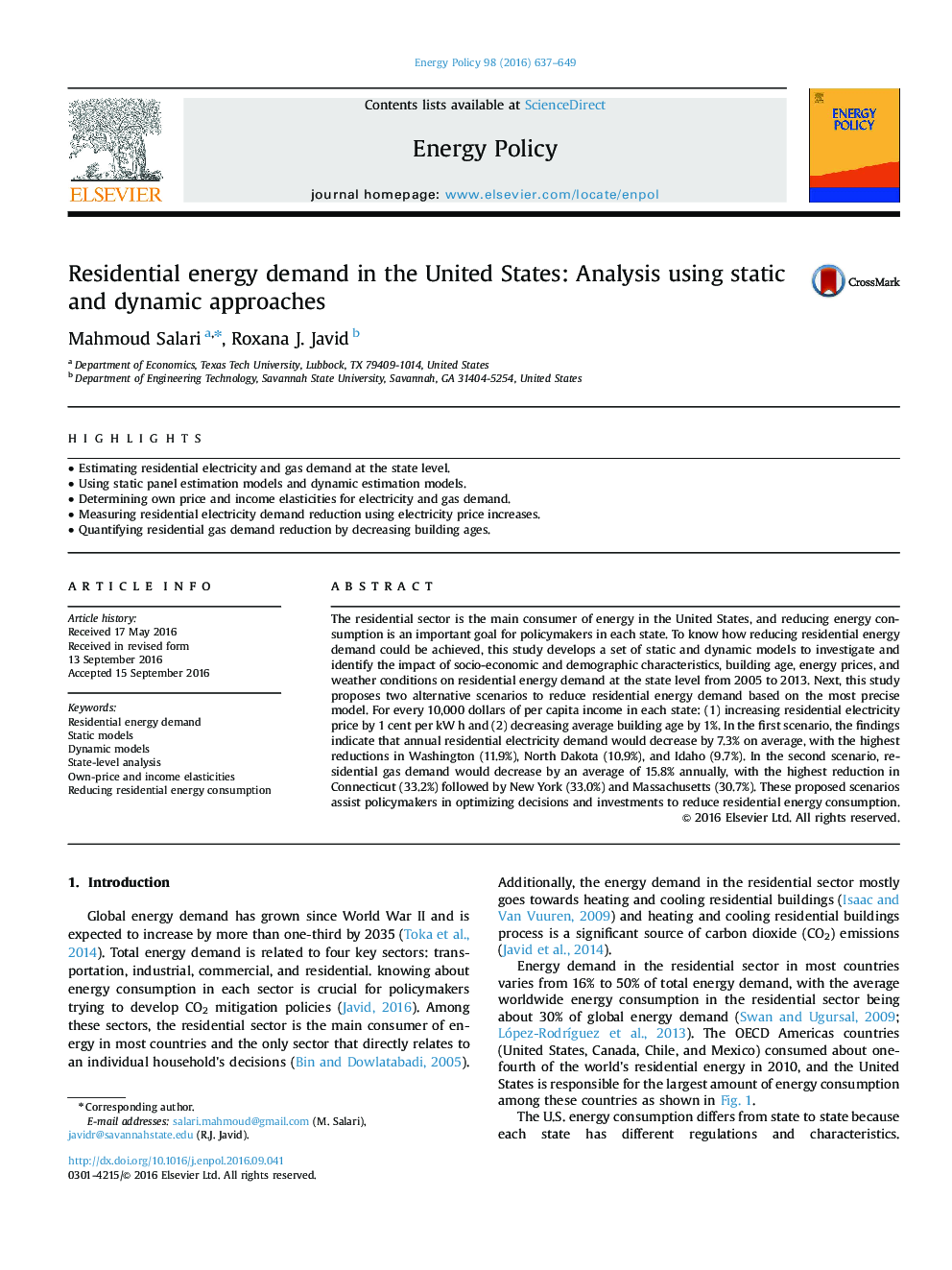| Article ID | Journal | Published Year | Pages | File Type |
|---|---|---|---|---|
| 7398443 | Energy Policy | 2016 | 13 Pages |
Abstract
The residential sector is the main consumer of energy in the United States, and reducing energy consumption is an important goal for policymakers in each state. To know how reducing residential energy demand could be achieved, this study develops a set of static and dynamic models to investigate and identify the impact of socio-economic and demographic characteristics, building age, energy prices, and weather conditions on residential energy demand at the state level from 2005 to 2013. Next, this study proposes two alternative scenarios to reduce residential energy demand based on the most precise model. For every 10,000 dollars of per capita income in each state: (1) increasing residential electricity price by 1 cent per kWÂ h and (2) decreasing average building age by 1%. In the first scenario, the findings indicate that annual residential electricity demand would decrease by 7.3% on average, with the highest reductions in Washington (11.9%), North Dakota (10.9%), and Idaho (9.7%). In the second scenario, residential gas demand would decrease by an average of 15.8% annually, with the highest reduction in Connecticut (33.2%) followed by New York (33.0%) and Massachusetts (30.7%). These proposed scenarios assist policymakers in optimizing decisions and investments to reduce residential energy consumption.
Related Topics
Physical Sciences and Engineering
Energy
Energy Engineering and Power Technology
Authors
Mahmoud Salari, Roxana J. Javid,
